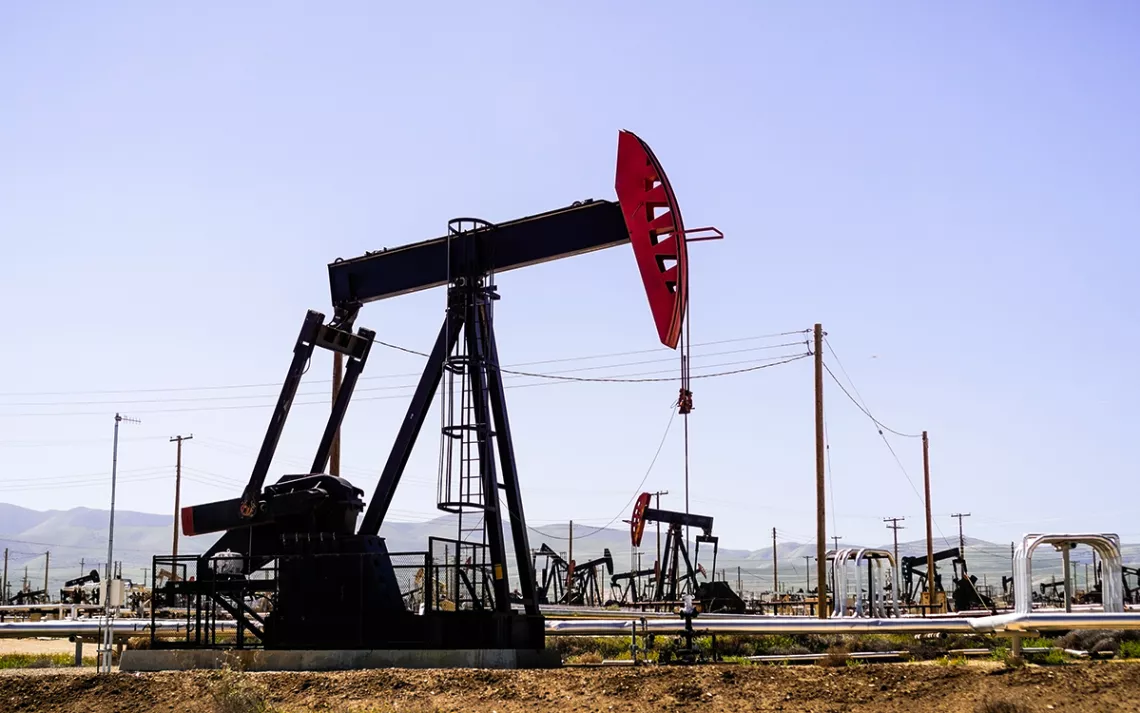Is California Clamping Down on Oil and Gas At Last?
Governor Newsom fires top regulator for being too chummy with industry

Photo by Andrei Stanescu/iStock
On July 11, Consumer Watchdog and the FracTracker Alliance reported that eight regulators at California’s Division of Oil, Gas, and Geothermal Resources (DOGGR) owned stock—in some cases, more than $100,000 worth—in the oil companies they’re supposed to regulate. The groups also noted that permit approvals for hydraulic fracturing in the state had doubled over the same January-to-April time frame last year, despite the stated opposition of California governor Gavin Newsom.
Newsom acted quickly. Within hours of the damning report, the governor fired State Oil and Gas Supervisor Ken Harris. In a letter to the state’s Department of Natural Resources ordering the dismissal, Ann O’Leary, Newsom’s chief of staff, wrote that Newsom “has long held concerns about fracking and its impacts on Californians and our environment, and knows that ultimately California and our global partners will need to transition away from oil and gas extraction.”
The move put to rest—for the moment at least—concerns among some environmentalists about Newsom’s dedication to moving his state beyond oil. Hopes were high when he was elected in November of 2018, and with good reason: The year before, as the state’s lieutenant governor, Newsom had informed the Trump administration that California’s “boom-and-bust” oil economy was nearing its end. In his gubernatorial campaign, he rejected contributions from fossil-fuel interests and suggested in debates that hydrofracturing, the controversial process used to extract a fifth of California’s crude, “was beginning to fall on its own petard.”
“He’s going to be the pioneer of phasing out oil and gas extraction in California,” predicted Kassie Siegel, director of the Center for Biological Diversity’s Climate Law Institute. “He’s going to be the leader the world needs on this.”
Six months in, however, little on the petroleum front had changed. Newsom’s predecessor, Jerry Brown, had infamously fired a pair of industry regulators for slowing down drilling permits by enforcing pesky state laws, and the same oil regulators that Brown installed were still in place. And Chevron had yet to stop the flow of polluted water and oil that had been spilling into a remote central California canyon since May (as of this writing, the spill had exceeded 800,000 gallons, according to the Los Angeles Times).
Nor had oil companies suffered any regulatory setbacks. Between January and April of 2019, production had declined over the same period in 2018 by a statistically trivial 2 percent. Some environmentalists began to worry.
To be fair, the governor had a lot on his hands in his first six months. “The state has been slammed with disasters associated with climate change,” notes Kathryn Phillips, director of Sierra Club California: Wildfire recovery, the bankruptcy of PG&E, the state’s largest investor-owned utility, and the downgrading of the two other California utilities’ credit ratings “has made everyone in energy very nervous. He’s had to invest a lot of staff time responding to disasters.”
Newsom did send up at least one hopeful flare when he signed off on a state budget that includes $1.5 million to study a managed decline of the state’s oil production. Two weeks before the DOGGR report, Siegel had called that budget item “a really big deal.” California, she said, “is the first major oil-producing state to acknowledge that fossil fuel extraction needs to end.
“It’s something we had been asking the Brown administration to do for two years,” Phillips says, referring to the #BrownsLastChance campaign that called upon the then governor to take action to scale back California oil.
The Sierra Club and other organizations had also been lobbying the Newsom administration to return DOGGR to its rightful mission: Not to serve the oil industry but to regulate it in the name of public health and safety. O’Leary’s letter, says Phillips, “sent a very strong signal that he’s thinking about this issue and taking action where he can. That’s very encouraging.”
“We’re hopeful that this is just the first of transformational changes,” agrees Siegel. Environmental justice groups are still demanding the state establish a half-mile buffer zone between new wells and residential areas, and Siegel wants to see Newsom start turning down permits, which she argues he has executive power to do. “No amount of regulation is going to keep California safe from the oil industry,” she says. “There’s no way to regulate oil extraction and respond to the climate emergency.”
Phillips is also encouraged, but not enough to let up on the pressure. “The governor so far has made progress,” she says, “but there’s a lot more to be done and a very narrow time frame to do it. Because the planet is melting.”
 The Magazine of The Sierra Club
The Magazine of The Sierra Club



